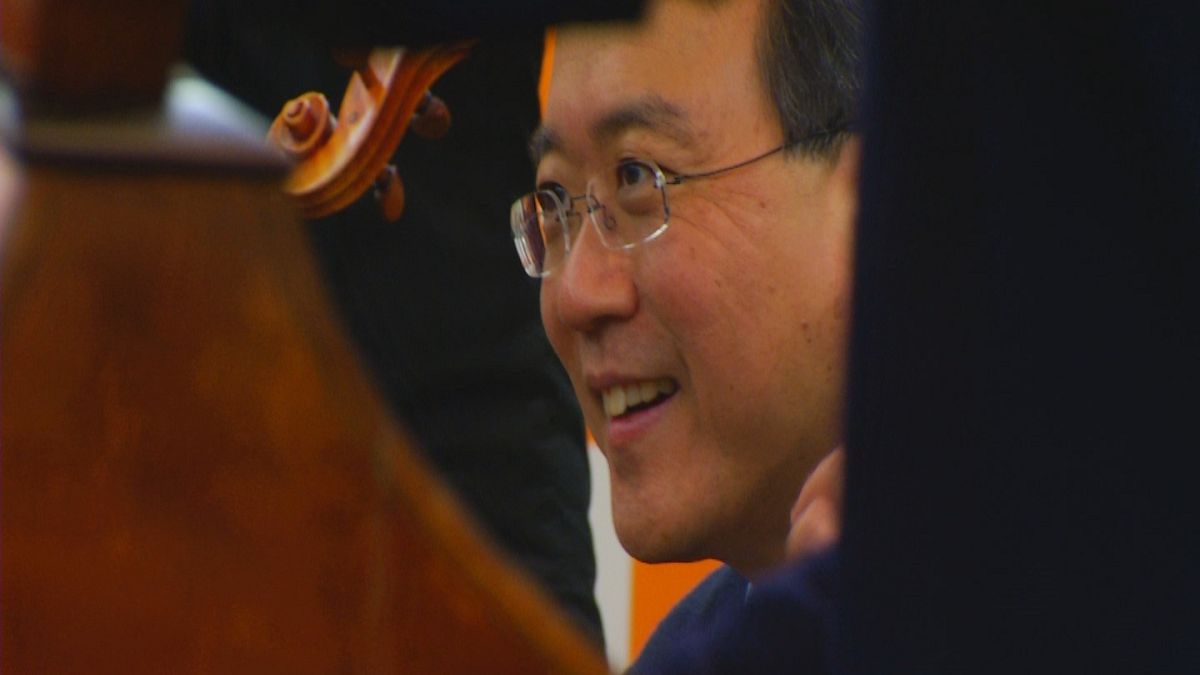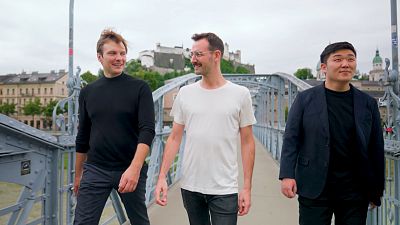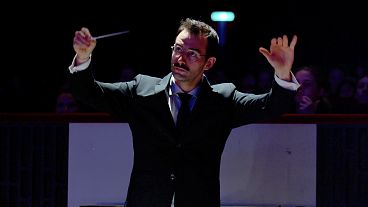Wu Man plays an ancient instrument. She explained:
“This is a historic Pipa. It was introduced from Persia and Central Asia, 2000 years ago through the Silk Road trade and this is why it fits very much in the Silk Road Ensemble.”
Kayhan Kalhor plays the Kamancheh.
“My intrument Kamancheh is a bowed instrument,” he explained. “The very different thing from other bow instruments is that you bow in one direction but you turn the instrument in order to reach different strings.”
Wu Man said the method of playing her ancient pipa has been brought up to date.
“You use five fingers to play. You use fake fingernails which is a very modern way. This started in the 50s, with four strings and bamboo frets.”
Wu Man and Kayhan Kalhor are members of the Silk Road Ensemble in which musicians from different cultures come together. The project is named after the famous Silk Road, which allowed different cultures to mingle over 2000 years as it carried trade between Europe, central Asia and the Far East.
Kayhan Kalhor spoke a little more about his kamancheh.
“The way it looks is probably a little different from western violin but its basically the same concept,” he said. “Somewhere along the road in the history this instrument came out of Persia and went eastwards to China and Japan and then westwards to Europe.”
The variety of instruments makes the ensemble unique. It was founded by the world renowned cellist Yo-Yo Ma in 1998.
It is all about exchanging ideas. Members of the ensemble try to pass on their experiences to the next generation. On their Asia tour they took time to give workshops like here in Seoul. Youngsters aged between eight and 12 play in the Sejong Youth Harmony Orchestra. They get lessons and the instruments for free. Their families can not afford musical education.
“What I really appreciate is to work with people that don’t have necessarily as many opportunities and chances to interact, to learn, to have direct contact in the creation of something,” cellist Yo-Yo Ma explained. “I feel that these experiences as well as performances… the reason to do them is to make them memorable. Memorable for somebody else as well as for ourselves. For somebody else you hope that these experiences can accumulate and be added so that they form the individual.”
The ensemble is on a constant musical journey bridging the gap between eastern and western music.
“It’s a different kind of music,” said Kalhor. “It’s another language, it’s very different, its very colourful and you learn to think in a bigger frame than you usually think in your own musical culture.”
In this item you can hear excerpts from:“Ascending Bird”, arranged by Silk Road Ensemble members Colin Jacobsen and Siamak Aghaei.
For more excerpts from our interviews with cellist Yo-Yo Ma, the kamancheh player Kayhan Kalhor and the pipa player Wu Man please click on the following link:



